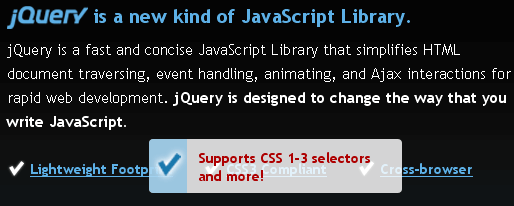Detect WEBP Support with JavaScript
Image optimization is a huge part of improving front-end performance. We've traditionally used JPG/JPEG, GIF, and PNG images but Google and the Chrome team developed the WEBP format which crunches file size and optimizes rendering. If you go to a site like GIPHY in Chrome you'll be served a WEBP, but if you go to the same page in Firefox you'll be served a GIF. Since GIPHY lazy loads its images, GIPHY has the opportunity to use WEBP feature detection with JavaScript.
Googler and Service Worker pioneer Jake Archibald recently tweeted a snippet showing how you can use a service worker to detect WEBP support:
async function supportsWebp() {
if (!self.createImageBitmap) return false;
const webpData = 'data:image/webp;base64,UklGRh4AAABXRUJQVlA4TBEAAAAvAAAAAAfQ//73v/+BiOh/AAA=';
const blob = await fetch(webpData).then(r => r.blob());
return createImageBitmap(blob).then(() => true, () => false);
}
(async () => {
if(await supportsWebp()) {
console.log('does support');
}
else {
console.log('does not support');
}
})();
Jake fetches a valid WEBP data URI to determine if the browser supports WEBP -- genius! His script also uses async / await to handle promises which I will be covering soon on this blog. Note that this code works outside a service worker, so you can use it anywhere within your own projects.
If your site is heavy on imagery, consider formatting your images with WEBP; Chrome's market share is so large that it will definitely be worth it. If you like small tips like this, be sure to follow Jake on Twitter!




Nice snippet there!
You can also utilise
pictureto define a series of image types and let the browser decide what to load.It doesn’t correctly detect WebP on Firefox though! :(
It is funny to use
.createImageBitmapfor WebP detection, method that Safari, Edge and IE — main targets for detection — doesn’t support.As Alex said, this test falls short due to
createImageBitmapwhich if you check for browser support actually has worse support than Webp itself.https://caniuse.com/#search=webp
https://caniuse.com/#search=createImageBitmap